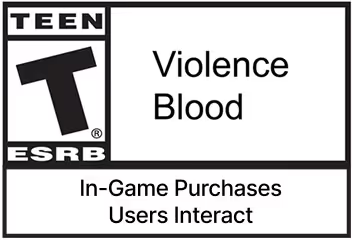Welcome to Pixel Pushers — the show where we explore the creative forces shaping the future of gaming. Each episode dives deep with the developers, artists, and storytellers pushing the boundaries of interactive worlds — from groundbreaking VR adventures to the games redefining community play.
In this episode, hosts Jake Steinerman (former Head of Community at Spatial and now Developer Advocate at Meta Reality Labs) and Deepak (former DevRel at Roblox and Epic Games, now also at Meta) sit down with one of VR’s most inventive minds: Alan Sherber, Creative Director of Animal Company.
Alan’s work spans across platforms — from Gridform, a visually stunning arcade arena game on Steam, to Shooty Shooty, a fast-paced action shooter on Spatial. But it’s Animal Company, a breakout VR hit with over 1 million monthly players and 350,000 Discord members, that’s redefining how players explore, collaborate, and create in virtual spaces.
From Calculator Games to Cult-Favorite VR Worlds
Alan’s game design journey started humbly — with games built on a TI-89 calculator in school. “I wanted to make top-down shooty games,” he recalls, citing Nuclear Throne as a key inspiration.
Years later, that same drive to experiment led to Animal Company, born from a simple internal challenge: what if we built a social, sandbox-style multiplayer VR game?
The team began with a hackathon, prototyping different concepts — from minigame collections to horror adventures. Alan pushed for a survival sandbox inspired by Lethal Company and Gorilla Tag, merging horror, chaos, and creativity into one world.
“It felt like the only possible output,” he laughs. “You want to make the game that feels like an obvious win.”
Building Animal Company: Chaos, Collaboration, and Community
What started as small playtests with 50 concurrent users quickly grew into a million-player phenomenon. Yet, Alan insists the heart of the project hasn’t changed.
“Once you have 50 players online at all times, you already have an ecosystem,” he explains. “From there, it’s just about keeping it alive.”
The secret? A blend of structured chaos and player-driven storytelling.
Alan credits the Animal Company team’s chemistry — especially early collaborators like Waldo and Wonkee — for shaping the game’s DNA. “It wasn’t one person’s vision. It was three people mashing ideas that somehow fit together perfectly.”
The Mysterious Lore of Animal Company
One of the most intriguing aspects of Animal Company is its evolving lore — from the shadowy Canopy Group to the cryptic updates that drop weekly.
“I actually came up with Canopy Group back in college as part of a creative writing project,” Alan shares. “It was just a name for an evil corporation that sounded right. But it stuck — it’s appeared in a bunch of prototypes I’ve made since.”
Players love uncovering mysteries hidden throughout the maps, and Alan admits much of the story evolves on the fly. “It’s not that there’s no master plan,” he says, “but sometimes, I’m just inspired by what’s cool at the moment. Like the dam map? I added it after seeing a massive dam on vacation.”
Weekly Updates, Procedural Worlds
To keep the game feeling fresh, Animal Company uses a semi-procedural world system, where the map rebuilds itself weekly from modular chunks.
“The map is made of small puzzle pieces that combine randomly,” Alan explains. “That structure lets us build new environments fast, test ideas, and surprise players constantly.”
This design choice allows Animal Company to maintain a sense of discovery — no two sessions are exactly alike, and every week introduces something new for players to explore.
Lessons from Roblox, League of Legends, and RuneScape
Alan draws heavy inspiration from community-driven games like Roblox, RuneScape, and League of Legends.
“Roblox might look chaotic,” he admits, “but it’s also the cutting edge of game design. The way it throws hundreds of players into the same lobby creates this natural social curiosity — ‘how’d you get that?’ — and that drives engagement.”
He believes this principle — emergent player storytelling — is key to Animal Company’s success. “It’s not a movie being shown to you. You make the story inside the game.”
The Challenge of Building for VR
For Alan, the biggest difference between traditional and VR game development isn’t in the design philosophy — it’s the iteration loop.
“When I’m making a PC game, I test every 15 seconds,” he explains. “But in VR, even putting on and taking off the headset adds friction. It slows down how fast you can iterate, and that affects how the game develops.”
Despite the challenges, he sees VR as fertile creative ground. “You don’t have to reinvent the wheel,” he says. “You just have to find ways to make the experience more alive.”
Rapid-Fire with Alan Sherba
- Favorite Animal Company avatar: The dinosaur with tiny arms and extender arms. “It’s so epic.”
- Favorite map: The sewers (nostalgia) and the dam (most effort).
- Most chaotic item: The RPG — “it’s probably caused the most destruction on our servers.”
- Favorite non-AC game: League of Legends or RuneScape.
- One word to describe the AC community: “Funny.”
- Dream collaboration: “Kojima — imagine him directing an Animal Company update.”
Advice for Aspiring Game Developers
Alan’s closing advice to future creators is refreshingly simple:
“If you want to make games, make games. Open Unity, build something — even if it’s rough. You’ll learn more by making one bad game than reading ten tutorials.”
Why Animal Company Is a Blueprint for the Future of VR
What makes Animal Company special isn’t just its viral success — it’s the way it blends creative chaos, community storytelling, and player-driven evolution.
From modular world design to fan-inspired updates, the game represents a new era of interactive development where players are not just participants — they’re collaborators.
As Animal Company continues to evolve, it’s clear that Alan and his team are not just building a game — they’re building a living universe, one update at a time.




.webp)




